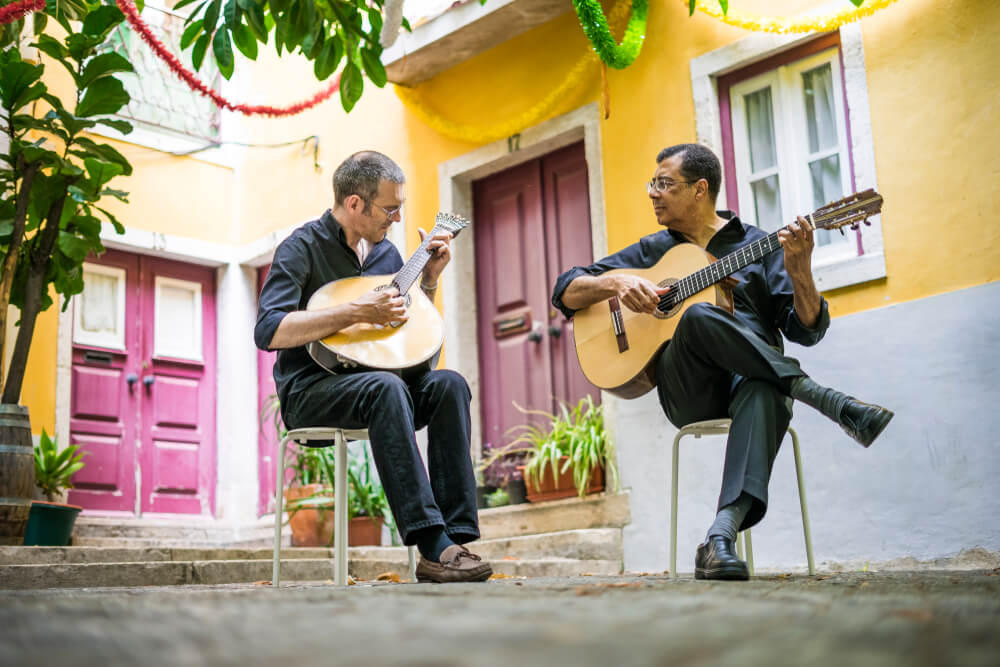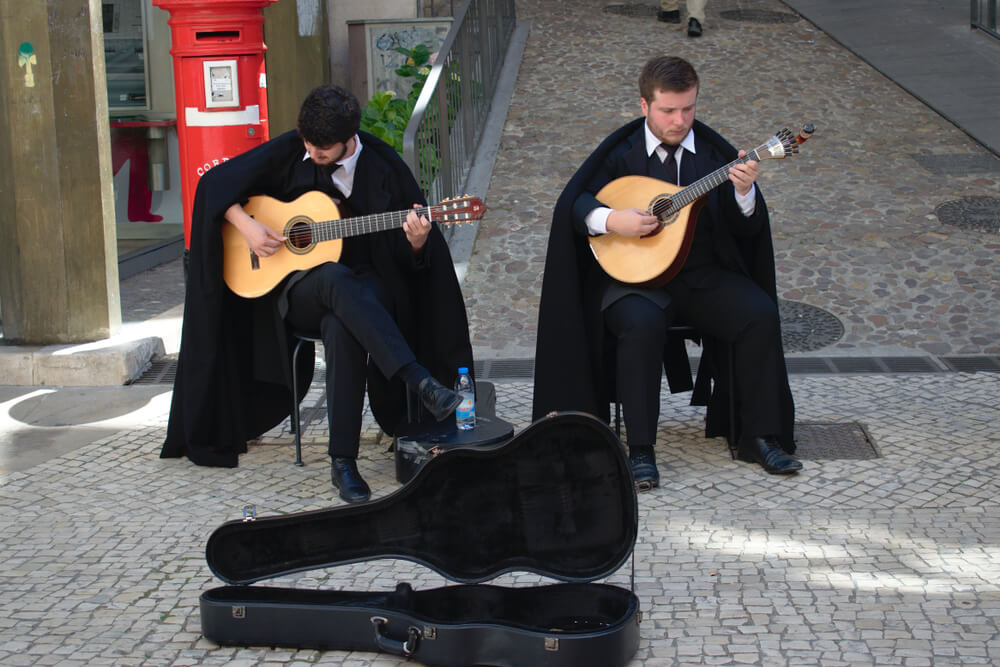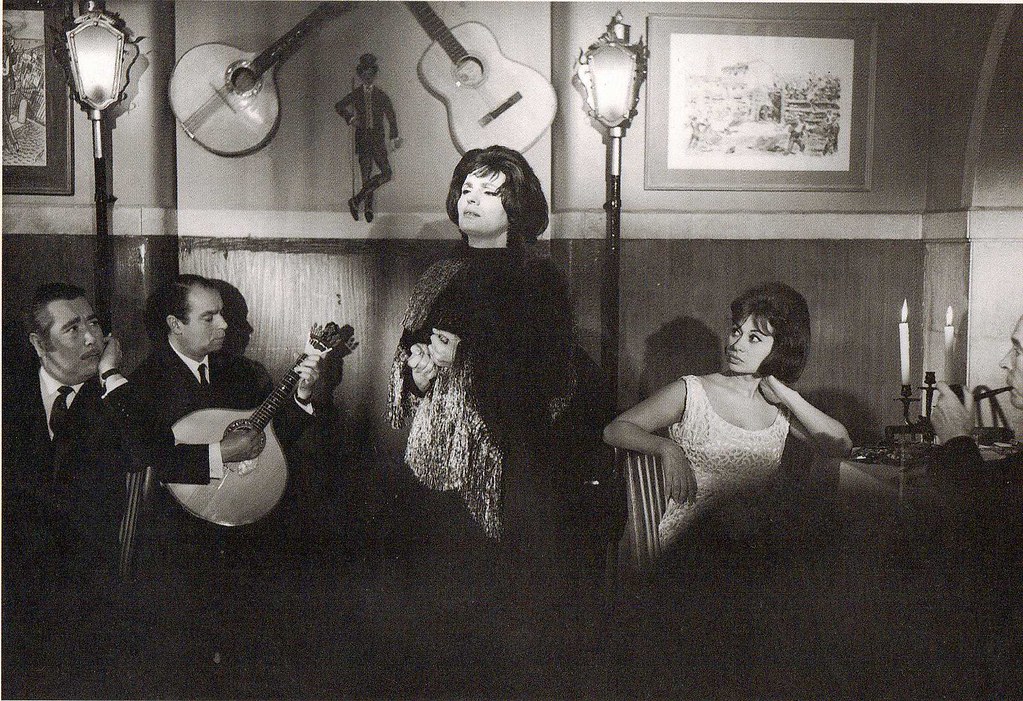Live and feel Coimbra’s Fado

In Portugal, we like to say that life is generally summed up in the “3Fs”. There’s Fatima, Football (almost a religion in its own right) and the musical song Fado.
Originally the music of Lisbon’s wretched, then of Coimbra’s amorous and slightly rebellious students, Fado is a kind of spleen that is inseparable from Portugal. The essence of this ancient song remains in the expression, even the cry, of a vague à l’âme and other inadequacies of life that the eternal and mysterious “saudade” knows so well how to define.
In Lisbon as in Coimbra, the genesis of this essential component of the Portuguese heritage is nurtured and defended on a daily basis. In the most intimate of settings and in total darkness, the fado brings together singers, musicians and listeners in the same glow. That of the Portuguese soul.
The soul of Portugal in song
Fado: where and when?
If we wisely refer to the original etymology of the word, fado comes from the Latin “fatum” meaning “fate”, “death” or “statement”. Yes, we agree, it’s not very cheerful! But coming from one of the saddest musical songs in the world, we shouldn’t have expected anything else…
Saying exactly when the very first notes of fado were sung is a very thorny subject. Quite simply because the origins go back a long way and, as is always the case in this kind of situation, there is not always a written record. What’s more, they have not been preserved over time. Only a handful of historians, such as Rui Vieira Nery, have been able to trace fado’s official beginnings back to the 1820s and 1830s.
At that time, of course, we were in Portugal, and Lisbon in particular. The Portuguese capital, which has always been open to the world, is home to a diverse mix of cultures at every level. In the musical sphere, it didn’t take long for fado to take root and gradually find its place in the working-class neighbourhoods of the city known as the “city of 7 hills”.
Fado: what and how?
Fado, born of the meeting of sailors’ songs and Afro-Brazilian music (lumdum and modhina), was initially a musical genre marginalised and ignored by intellectuals. It resonated in the taverns and seedy streets of Bairro Alto, Mouraria and Alfama, through the voices of bohemians, courtesans, port workers and other figures of the urban working class.
Fado is danced, beaten and, above all, sung with sadness, heartbreak and a sense of loss or lack. This is perfectly defined by the term “saudade”, equated with nostalgia, but not quite. Between you and me, only the Portuguese really know what it’s all about.
Fado is a song that adds colour to the repertoire and places great emphasis on vocal performance. Among all its stylistic peculiarities, there is one that is easy to recognise. It is the use of rubato, which means that the music stops at the end of a phrase while the artist holds the last note for a poignant effect.
Bringing fado to life requires a combination of talents. Firstly, a singer with a big voice and a very expressive face, known in Portuguese as a “fadista”. And secondly, a small band of musicians who play their “guitarra” (a Portuguese 12-string guitar shaped like a mandolin) and their “violão” (acoustic guitar), with or without a chorus. No more, no less, to bewitch the audience!
From the slums of the city, fado gradually climbed the social ladder to become appreciated by the bourgeoisie. It became more refined and achieved its noble status in the 1950s, when Amália Rodrigues, the ultra-famous “fadista”, propelled the art of fado throughout Portugal and beyond its borders. Such is the interest and love shown in the national song by each new generation that on 27 November 2011, UNESCO declared fado an Intangible Cultural Heritage of Humanity. This is an affirmation of the enduring nature of the musical style.
Lisbon Fado VS Coimbra Fado
Although we like to speak of fado in the singular, there are in fact two main varieties. Lisbon fado in the south and Coimbra fado in the north. I promise, it doesn’t complicate things. Once you know the 2/3 differences between them, you won’t be able to confuse them.
The Lisbon Saudade
Lisbon fado is the best known and most widespread. It is particularly popular in the Alfama, Mouraria, Bairro Alto and Madragoa districts. Both men and women sing it around very specific themes, such as disappointed love, separation, poverty, the loss of a loved one… So the audience’s heart is overcome by an overflow of “saudade”, bitterness and melancholy.
Here are a few titles to help you get a better idea of Lisbon fado:
- “Abandono by Amália Rodrigues
- “Ó gente da minha terra” by Mariza
- “Loucura” by Lucilia do Carmo
- “Gaivota” by Amália Rodrigues
Coimbra’s student youth
In Coimbra, in the north of Portugal, fado is definitely a second home. Unlike in the Portuguese capital, it is exclusively sung by men. A rather discriminatory detail at first sight, but one that hides a strong history of academic tradition.
Since the 16th century, university students have enjoyed singing in the streets of the city. All musical styles were permitted until, in the 1900s, fado took centre stage.
In their academic uniforms, consisting of a suit and a long black cape as well as leggings, the singers, alone or accompanied by musicians, indulge in serenades or ironic, even critical, lyrics. During the 1960s, Coimbra fado was a protest song used as a form of resistance to Salazar’s repressive regime.
Although the more ceremonial sounds of Coimbra fado differ from those of Lisbon, the instruments used to play them are identical. These are the “violão” and the “guitarra portuguesa”, which nevertheless has its own tuning, construction and sound colouring in Coimbra.
Here are a few titles to give you a better idea of Coimbra fado:
- “Trova do vento che passa” by Adriano Correia de Oliveira
- “Do Choupal Até Á Lapa” by Zeca (José) Afonso
- “Balada da Despedida” from 5º Ano Jurídico 88/89
- “O meu menino é d’Oiro” by Zeca (José) Afonso
- “Verdes Anos” by Carlos Paredes
Where can you listen to Fado in Coimbra?
Are you about to make a trip to Coimbra and have rarely, if ever, had the opportunity to attend a fado performance? You might as well combine business with pleasure! Once you’ve discovered the wide range of monuments in Portugal’s oldest university city, let yourself be transported by a few notes of fado at specific addresses or in less formal but equally suitable venues.
The best official places to enjoy fado in Coimbra :
Fado ao Centro
Address: 7 R. Quebras Costa
Contact: +351 239 837 060
À Capella – Casa de Fados
Address: Capela da Victória, R. do Corpo de Deus
Contact: +351 239 833 985
Be warned: these two addresses are well known among fado lovers. Advance booking is highly recommended!
If these 2 venues or others, victims of their own success, are no longer able to accommodate you, or if the price of the shows seems too expensive, you should know that all is not yet lost. Sometimes, on the corner of an alleyway, fado serenades can quickly resound. Usually, the steps of the old cathedral (Sé de Coimbra) are commandeered for the occasion. So get lost in Coimbra and keep your ears open!
A little scoop!
During one of her performances, Amália Rodrigues, the “Queen of Fado”, didn’t really have a suitable outfit to wear, so she entered the stage wrapped in a shawl. An accessory that eventually accompanied her throughout her incredible career and that subsequent female fado singers adopted as an almost indispensable part of their “fadista” outfit.
200 audioguided tours for cities all around the world
Download




